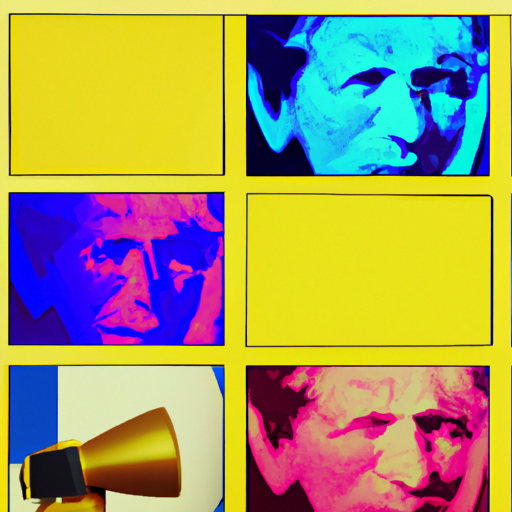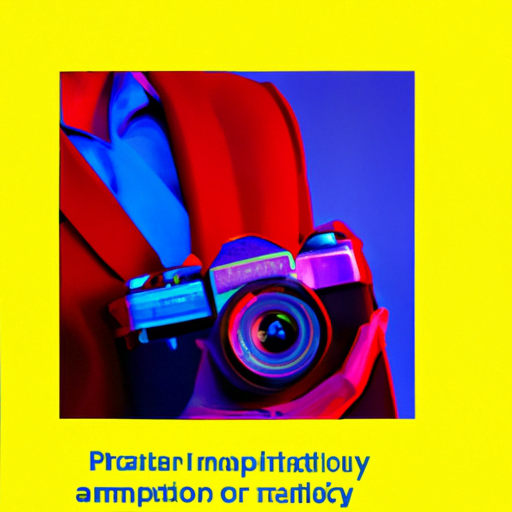
-
Table of Contents
- Designing for Emotional Impact: Connecting with Your Audience
- The Power of Emotional Design
- Understanding Your Audience
- Creating Emotional Connections through Visual Design
- Color Psychology
- Typography
- Visual Imagery
- Designing for Emotional Impact in User Experience
- Microinteractions
- Storytelling
- Personalization
- Case Studies: Emotional Design in Action
- Apple
- Coca-Cola
- Conclusion
Designing for Emotional Impact: Connecting with Your Audience

When it comes to design, aesthetics and functionality are often the primary focus. However, in order to truly connect with your audience, it is essential to design with emotional impact in mind. Emotional design goes beyond just creating visually appealing designs; it aims to evoke specific emotions and create a memorable experience for the user. In this article, we will explore the importance of designing for emotional impact and provide valuable insights on how to achieve it.
The Power of Emotional Design
Emotions play a significant role in decision-making and can greatly influence how users perceive and interact with a design. Research has shown that emotions have a direct impact on memory, attention, and overall user experience. By designing with emotional impact, you can create a deeper connection with your audience, increase engagement, and ultimately drive desired actions.
One of the key benefits of emotional design is its ability to create a memorable experience. When a design evokes positive emotions, users are more likely to remember it and associate those emotions with the brand or product. This can lead to increased brand loyalty and word-of-mouth recommendations.
Furthermore, emotional design can also help to differentiate your brand from competitors. In a crowded marketplace, where products and services often have similar features and functionalities, emotional design can be a powerful tool to stand out and create a unique identity.
Understanding Your Audience
Before diving into the design process, it is crucial to understand your target audience and their emotional needs. Conducting thorough research and gathering insights about your audience’s preferences, values, and motivations will help you design with empathy and create experiences that resonate with them.
One effective way to understand your audience is through user personas. User personas are fictional representations of your target audience, based on real data and research. They help you visualize and empathize with your users, allowing you to design with their specific needs and emotions in mind.
For example, if you are designing a website for a travel agency targeting adventure-seeking millennials, your user persona might be a young traveler named Sarah. By understanding Sarah’s desires for unique experiences and her need for excitement, you can design a website that evokes a sense of adventure and captures her attention.
Creating Emotional Connections through Visual Design
Visual design plays a crucial role in evoking emotions and creating a strong emotional connection with the audience. Here are some key elements to consider:
Color Psychology
Colors have a profound impact on our emotions and can be used strategically to elicit specific feelings. For example, warm colors like red and orange can evoke feelings of excitement and passion, while cool colors like blue and green can create a sense of calmness and trust. Understanding color psychology and using it effectively in your design can help you communicate the desired emotions to your audience.
Typography
The choice of typography can also contribute to the emotional impact of a design. Different fonts have different personalities and can evoke specific emotions. For instance, a bold and modern font may convey a sense of confidence and innovation, while a handwritten font can create a more personal and intimate feel. Selecting the right typography that aligns with the emotions you want to evoke is essential.
Visual Imagery
Images and illustrations have the power to evoke emotions instantly. By carefully selecting and incorporating visual elements that resonate with your audience, you can create a strong emotional impact. For example, a fitness app targeting health-conscious individuals might use images of active and happy people to inspire and motivate users.
Designing for Emotional Impact in User Experience
Emotional design is not limited to visual aesthetics; it should also be integrated into the overall user experience. Here are some strategies to consider:
Microinteractions
Microinteractions are small, subtle animations or feedback that occur during user interactions. They can add a touch of delight and surprise, creating a positive emotional response. For example, when a user successfully completes a task on a website, a subtle animation or sound effect can provide a sense of accomplishment and satisfaction.
Storytelling
Storytelling is a powerful tool for creating emotional connections. By weaving a narrative into your design, you can engage users on a deeper level and evoke specific emotions. For example, a nonprofit organization working to protect endangered species might use storytelling to create empathy and inspire action.
Personalization
Personalization is another effective way to create emotional connections with users. By tailoring the experience to individual preferences and needs, you can make users feel valued and understood. For example, an e-commerce website that recommends products based on a user’s browsing history and preferences can create a sense of personalized attention.
Case Studies: Emotional Design in Action
Let’s take a look at some real-world examples of emotional design:
Apple
Apple is known for its exceptional emotional design. From the sleek and minimalist aesthetics of their products to the carefully crafted user experiences, Apple creates a strong emotional connection with its audience. The use of clean lines, intuitive interfaces, and attention to detail evokes a sense of elegance and sophistication, making users feel a sense of delight and satisfaction.
Coca-Cola
Coca-Cola has successfully used emotional design to build a strong brand identity. Through their marketing campaigns and packaging design, Coca-Cola evokes feelings of happiness, togetherness, and nostalgia. The iconic red color, the classic contour bottle, and the use of uplifting imagery all contribute to creating a positive emotional connection with consumers.
Conclusion
Designing for emotional impact is a powerful way to connect with your audience and create memorable experiences. By understanding your audience’s emotional needs, incorporating emotional design elements, and integrating emotional impact into the user experience, you can create designs that resonate and drive desired actions. Remember, emotions are a universal language, and by speaking to your audience’s emotions, you can create a lasting impact.
